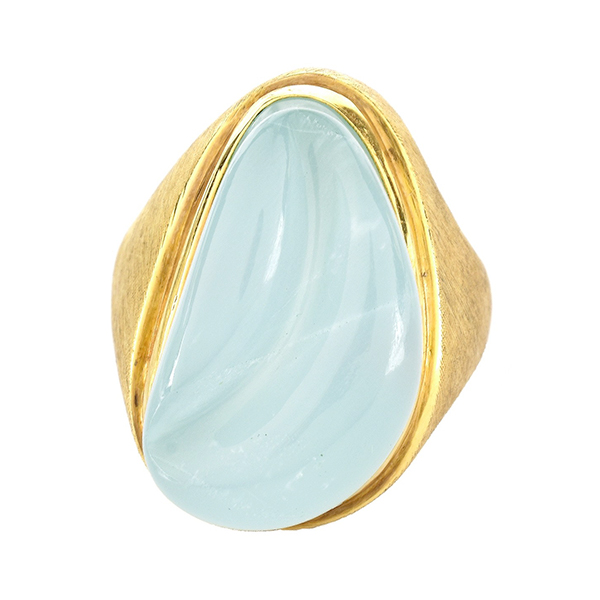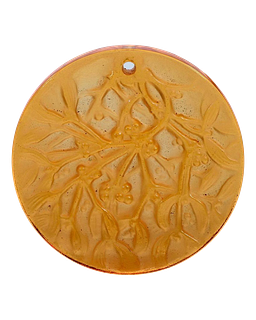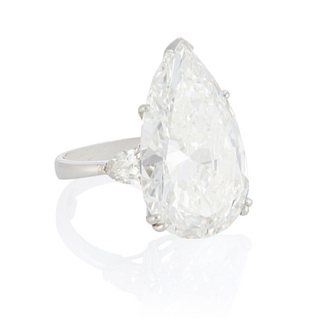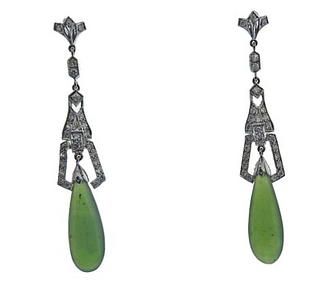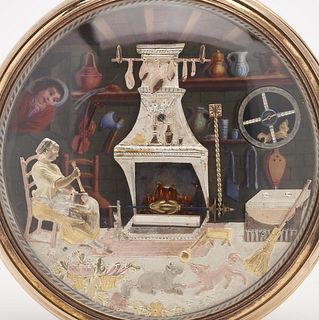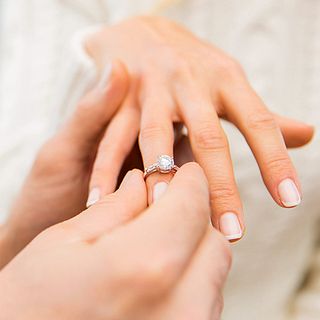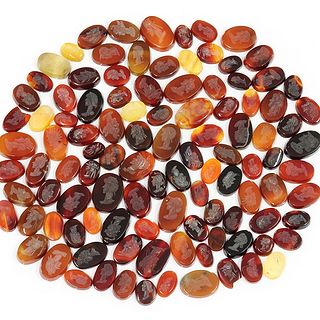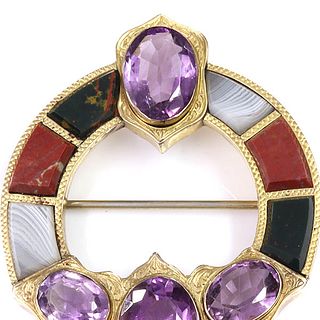The Legacy of Haroldo Burle Marx
Brazil has been a hotbed for jewelry talent in recent years: Silvia Furmanovich, Fernando Jorge, Ana Khouri, and Ara Vartanian. Not to mention that, H. Stern, one of the most famous names in jewelry, was founded in 1945 by Hans Stern in Rio de Janeiro. There is another name, still somewhat obscure in the United States but desired by jewelry connoisseurs worldwide, and that is the name of H. Burle Marx.
Haroldo Burle Marx (1911-1991) was born in Rio de Janeiro and part of an illustrious lineage, his father, Wilhelm Marx was a distant relative of Karl’s and owned a tannery in Brazil. His two oldest brothers were Walter Burle Marx, the celebrated classical composer, and Roberto, the world-renowned landscape architect and Renaissance man. Roberto left an indelible mark on his beloved Brazil in many ways but most famously he designed the black and white pebbled boardwalk of Copacabana beach that has become an international symbol of the vibrant country. An often quoted article that appeared in Time Magazine (“Brazil’s Marx Brothers”) in 1967 stated that the Marx brothers were “the most amazing and talented brother act in Brazil.”
Lot 48, H. Burle Marx Aquamarine and 18K Gold Ring; Estimate $2,000-$3,000
Haroldo took his craft seriously and went to study gemology in Germany’s “gemstone town” Idar-Oberstein, the center of the gem-cutting industry. He apprenticed for four years before opening his own workshop in 1945. His business proved fruitful through the 1950s when he opened an atelier at Rodolfo Dantas, 6 Copacabana, in Rio de Janeiro. Haroldo made a name for himself quickly, certainly his talent coupled with his social standing helped attract a moneyed clientele. His clients included the Empress Farah of Iran, Grand Duke Jean of Luxembourg, the late Nelson A. Rockefeller and Valentino. He was often asked by the Brazilian government to create jewels for visiting dignitaries, including a gold cross with amethysts and red tourmalines for Pope John Paul II (which he was never gifted to the Pope for political reasons).
That same Time Magazine article described him as the “wealthy manufacturer of Brazil's most exquisite jewelry.” And exquisite it certainly was. Inspired by rich natural resources of his beautiful country, Haroldo had dazzling stones at his disposal. “Haroldo glows over the beauty of his native tourmalines, topazes, rubies and garnets, shapes each gem in amoeba forms that follow the structure of the stone.” Curvaceous aquamarines as blue as the ocean, multi-colored tourmalines, rich amethysts, and angelic rose quartz sit atop hand-wrought textured high-karat gold creations. The organic shape of the carved stones known as the “forma livre” became a hallmark of Haroldo’s work. When you look at his rings in profile, the stones sit atop the bezel so effortless and appear almost weightless like waves rippling over the sandy beach of Copacabana.
Lot 48, H. Burle Marx Aquamarine and 18K Gold Ring; Estimate $2,000-$3,000
While Haroldo is credited as being the jeweler in the family, he often collaborated with his brother Roberto on many designs, as was explored in the exhibition “Forma Livre: The Jewelry of Brazil's Burle Marx Brothers” curated by Mahnaz Ispahani Bartos for the Mahnaz Collection in 2016. Haroldo took credit for the “forma livre” cut but there is certainly some distinction to be made between when the brothers were working together and when they stopped – a rift that lasted their lifetime- in the late 1960s. Haroldo, on his own, continued to make jewelry through the 1980s. A recent exhibition, “Roberto Burle Marx: Brazilian Modernist” in New York’s Jewish Museum (May 6- September 18, 2016), presented the brothers’ jewelry designs and drawings together.
Lot 48, H. Burle Marx Aquamarine and 18K Gold Ring; Estimate $2,000-$3,000
In 1982, Haroldo’s jewelry became available for the first time in the United States in a small shop located in the lobby of the Watergate Hotel in Washington D.C. It’s gem-loving and knowledgeable proprietor Alta Leath, was married to U.S. Representative Marvin Leath, Democrat of Texas, met Haroldo on a trip to Rio de Janeiro and invited him to show his jewels. The New York Times published a story, “Lapidary Touches in Jewels” (May 23, 1982) chronicling the sale with high praise from Paul Desautels, curator of the Smithsonian Institution's department of mineralogy. ''The gems are the very top of the market. Some of them I've not seen elsewhere, and the pieces are meticulously crafted. The quality of the work is all very beautifully and carefully done.'' 'Just Like an Architect'.
An 'Aquamarine and 18K Gold Ring' by H. Burle Marx is coming up on Bidsquare in Kodner Galleries, Estate Jewelry & Collectibles sale on February 20th.
Don't have a Bidsquare account? Sign up here!
Be in the know about upcoming auctions and exciting post-sale results by following us on Facebook and Instagram.

Bella Neyman is the co-founder of New York City Jewelry Week, a city-wide celebration of jewelry held annually in November. She is also an independent curator and writer specializing in contemporary art jewelry. Exhibitions that Bella has organized have been on view in the United States and Europe. She is currently working on an exhibition, 45 Stories in Jewelry, which will open at the Museum of Arts and Design in February 2020. Bella’s articles on decorative arts, fashion and jewelry have appeared in the New York Times, MODERN Magazine, Metalsmith, American Craft and The Magazine Antiques amongst others. From 2014-2018, she was the director of the Gallery at Reinstein|Ross, a New York-based gallery specializing in contemporary jewelry. Bella has been on the Board of the Art Jewelry Forum since 2013. She lives with her husband and daughter in Brooklyn, N.Y.
- A Buyer’s Guide to Diamonds: Understanding the 4 Cs
- Artist Spotlight: KAWS, A Contemporary Icon of Street Art and Collecting
- The Golden Art of Ormolu: A History of Gilded Brilliance
- Winter Landscapes, Lineage & Modern Expression
- Artist Spotlight: David Gerstein, Sculptural Pop in Bold Color & Motion
- The History of Rolex Watches: Innovation, Precision, and Enduring Prestige
- Preview the December Doyle+Design Auction: A Celebration of Modern & Contemporary Mastery
- Billings Winter Design 2025: A Celebration of Modern Mastery Across Eras
- The Ultimate Holiday Gift Guide: Luxe Finds From Bidsquare’s Finest Auctions
- Fine & Antique Jewelry Sale: A Curated Journey Through Craftsmanship & Design



 EUR
EUR CAD
CAD AUD
AUD GBP
GBP MXN
MXN HKD
HKD CNY
CNY MYR
MYR SEK
SEK SGD
SGD CHF
CHF THB
THB

